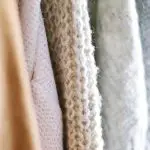So you know the saying, 'A stitch in time saves nine,' right? Well, when it comes to crafting with E6000, choosing the right fabric can make all the difference. Whether you're working with natural, synthetic, or blended fabrics, understanding how different textures and weights interact with E6000 will take your projects to the next level.
In this guide, we'll walk you through the best fabrics to use with E6000, so you can achieve professional-looking results every time. From smooth, lightweight fabrics to heavy, textured ones, we've got you covered.
Let's dive in and master the art of pairing E6000 with the perfect fabric for your next project.
Key Takeaways
- Cotton and linen are compatible and provide a sturdy surface for bonding with E6000 adhesive.
- Polyester is ideal for bonding with E6000 on synthetic fabrics, while nylon requires a fabric adhesive that offers durability and flexibility.
- Blended fabrics containing synthetic fibers, such as polyester-cotton and nylon-cotton, work well with E6000 and provide durability and flexibility.
- Textured fabrics should be lightly sanded and cleaned before applying E6000, while smooth fabrics like silk and satin require gentle application and proper care.
Natural Fabrics
When using E6000, you should consider that natural fabrics like cotton and linen are generally compatible with the adhesive. These fabrics are the best choices for E6000 because they provide a sturdy surface for the adhesive to bond to. Cotton, a durable and versatile fabric, is great for bonding with E6000 due to its ability to withstand the adhesive without compromising its integrity. Linen, known for its strength and smooth texture, also works well with E6000, making it an ideal choice for various crafting and DIY projects.
On the other hand, delicate natural fabrics like silk and satin require special care when adhering with E6000. While it's possible to use E6000 with these fabrics, it's crucial to handle them with caution to prevent any damage. Silk and satin's delicate nature means that extra care should be taken during the application process to avoid any potential harm to the fabric.
Understanding the compatibility of natural fabrics with E6000 is essential for achieving successful and durable bonds in your projects. By choosing the right fabric for your adhesive needs, you can ensure the longevity and quality of your creations.
Synthetic Fabrics
When it comes to synthetic fabrics, it's important to consider how E6000 interacts with materials like polyester and nylon. These fabrics can offer unique challenges and benefits when working with adhesives.
Understanding the specific properties of each fabric will help you make informed decisions about which materials are best suited for your project.
E6000 and Polyester
Polyester's smooth texture makes it an ideal fabric for adhering with E6000, providing a strong and durable bond for your projects.
When using E6000 with polyester, ensure that the fabric is clean and free of any debris to promote optimal adhesion.
Apply the E6000 adhesive evenly onto the polyester fabric, and then press the surfaces together firmly.
Allow the bond to cure for at least 24 to 72 hours to achieve maximum strength.
Polyester bonding with E6000 is particularly effective for crafting projects, fabric repairs, and embellishments.
The versatility of E6000 allows for seamless adhesion with polyester, making it a go-to choice for creating long-lasting and resilient fabric bonds.
Nylon and E6000
To ensure a strong and durable bond with E6000, it's important to consider nylon's properties as a synthetic fabric. Nylon, being a synthetic fabric, requires a fabric adhesive that offers both durability and flexibility.
When working with nylon and E6000, keep the following in mind:
- Compatibility: E6000 is well-suited for bonding with nylon due to its ability to maintain a strong and flexible hold, aligning with the properties of the fabric.
- *Durability*: E6000 provides a long-lasting bond with nylon, ensuring that the fabric adhesive can withstand the wear and tear that nylon fabrics often endure.
- *Flexibility*: Nylon fabrics require an adhesive that can move and stretch with the fabric, making E6000 an ideal choice for maintaining flexibility and resilience.
Blended Fabrics
Blended fabrics provide a versatile and durable option for using E6000, offering a combination of different fibers that can enhance the adhesive's effectiveness. Fabric blends for durability and flexibility are excellent choices when working with E6000 adhesive. Blended fabrics, such as polyester-cotton, nylon-cotton, and spandex-polyester, are known for their strength, resilience, and flexibility. These qualities make them ideal for a wide range of projects where E6000 adhesive is a preferred choice.
When it comes to blended fabric compatibility with E6000 adhesive, it's important to consider the specific blend of fibers in the fabric. E6000 works well with a variety of blended fabrics, especially those that contain synthetic fibers like polyester or nylon, which have a porous surface that allows the adhesive to bond effectively. The synthetic fibers in blended fabrics provide a strong foundation for the E6000 adhesive to create a durable bond. Additionally, the flexibility of blended fabrics allows for movement without compromising the bond created by the E6000 adhesive.
Textured Fabrics
For using E6000 adhesive, you should consider how textured fabrics interact with the adhesive, as their surface characteristics can impact the bond strength. Textured fabrics present unique challenges when it comes to adhesion. Here's what you need to know:
- Surface Preparation: Textured fabrics often have uneven surfaces, so it's crucial to prepare the fabric before applying the adhesive. Lightly sanding the textured surface can help create a smoother area for better adhesion.
- Use fine-grit sandpaper to gently sand the textured fabric, being careful not to damage the fibers.
- After sanding, clean the fabric thoroughly to remove any dust or debris, as these can interfere with the adhesive bond.
- Application Techniques: When working with textured fabrics, consider using a slightly thicker layer of E6000 adhesive to ensure that it fills the crevices and adheres properly to the fabric.
- Apply the adhesive in small sections, pressing firmly to ensure good contact with the textured surface.
- Allow the adhesive to cure for the recommended time, ensuring a strong and durable bond.
Smooth Fabrics
Smooth fabrics like silk, satin, and velvet offer a different set of challenges when working with E6000 adhesive. These luxurious materials require careful application to ensure a strong bond without damaging the delicate texture.
Understanding the best practices for working with E6000 on smooth fabrics will help you achieve professional-quality results for your projects.
E6000 and Silk
Silk fabric adheres well to E6000, providing a smooth and strong bond for your crafting projects. When working with delicate materials like silk, it's essential to understand how E6000 can be used effectively. Here are some key points to consider:
- Gentle Application: Apply E6000 sparingly on silk fabric to avoid any discoloration or damage. Use a small amount of adhesive and spread it thinly and evenly on the fabric's surface.
- Drying Time: Allow E6000 to dry for at least 24 hours when bonding silk to ensure a secure and durable hold. Patience is crucial to achieve the best results when working with delicate fabrics like silk.
- Careful Handling: Handle the silk fabric with care after applying E6000 to prevent any shifting or misalignment during the drying process. Gently position the fabric and avoid any sudden movements that could disrupt the bond.
Adhering to Satin
When adhering to satin and other smooth fabrics, ensure thorough cleaning and degreasing of the surface before applying E6000. Satin's delicate nature requires careful handling to maintain its sheen and durability. Use a gentle detergent to spot clean any stains, and avoid rubbing vigorously to prevent damage to the fabric. Once the fabric is clean and dry, apply E6000 adhesive using a small, disposable applicator for precise application. To illustrate, below are some key points to consider when working with satin and other smooth fabrics:
| Satin Care | Fabric Durability |
|---|---|
| Use gentle detergent for spot cleaning | Handle with care to avoid snags |
| Avoid rubbing vigorously | Store in a cool, dry place |
| Use disposable applicator for adhesive application | Avoid direct sunlight to prevent fading |
| Test adhesive on a small, inconspicuous area first | Professional dry cleaning recommended |
Bonding With Velvet
Once you have thoroughly cleaned and degreased the surface, you can bond velvet and other smooth fabrics with E6000 using the same careful approach. When working with velvet, it's crucial to follow specific techniques to ensure a strong bond. Here are some best practices for working with velvet:
- Gentle Application: Apply a small amount of E6000 to the fabric using a gentle touch to avoid matting or damaging the delicate fibers.
- Start with a small test area to ensure the adhesive doesn't discolor or damage the velvet.
- Even Pressure: When bonding two velvet pieces together, apply even pressure to the bonded area and allow for sufficient drying time.
- Use clips or pins to hold the fabric in place while the adhesive sets.
- Precision: Be precise in your application to avoid excess adhesive seeping through the fabric, which can be challenging to remove without damaging the velvet.
Lightweight Fabrics
You frequently need to apply E6000 carefully when working with lightweight fabrics, ensuring a secure bond without causing damage. Lightweight fabrics such as chiffon, organza, and silk are known for their breathable and durable qualities. When using E6000 with these fabrics, it's important to apply a thin, even layer of adhesive to avoid any seepage through the delicate fibers. The versatility of E6000 makes it easy to use with lightweight fabrics, as it provides a strong bond without adding unnecessary weight or stiffness to the fabric.
To achieve the best results with lightweight fabrics, it's essential to allow the adhesive to dry completely before handling the bonded materials. This will ensure that the bond is secure without compromising the fabric's delicate nature. Furthermore, E6000 is known for its ability to withstand washing and dry cleaning, making it a reliable choice for lightweight fabrics that may require frequent cleaning.
Heavyweight Fabrics
For heavy fabrics such as denim or canvas, applying a small amount of E6000 will create a strong bond without compromising the material's integrity. When working with heavyweight fabrics, it's crucial to understand how to maximize the adhesive's effectiveness. Here are some tips to ensure the best results:
- Proper Surface Preparation:
Before applying E6000, ensure that the fabric surface is clean and free of any dust, dirt, or residue. This will allow the adhesive to bond directly to the fabric fibers, enhancing its strength.
- Even Application:
When applying E6000 to heavyweight fabrics, strive for an even and thin layer. This ensures that the adhesive penetrates the fabric evenly, maximizing the bond's strength.
- Clamping or Weighting:
After applying E6000 to heavyweight fabrics, consider using clamps or weights to hold the fabric in place while the adhesive cures. This additional pressure helps create a strong and lasting bond, especially in high-stress areas.
Canvas durability and denim strength make them ideal for various heavy-duty projects. By following these guidelines, you can effectively utilize E6000 to bond heavyweight fabrics, ensuring durability and longevity for your creations.
Frequently Asked Questions
Does E6000 Work Well With Delicate Fabrics Such as Silk or Chiffon?
Yes, E6000 works well with delicate fabrics like silk and chiffon. It provides a strong bond without damaging the material. However, it's important to test a small, inconspicuous area first to ensure compatibility.
Can E6000 Be Used on Waterproof or Water-Resistant Fabrics Like Nylon or Polyester?
Yes, E6000 can bond nylon and polyester effectively. It provides strong adhesion on waterproof fabrics, making it a great choice for projects involving these materials. Just ensure proper ventilation when using it.
How Does E6000 Adhere to Fabrics With a Significant Amount of Stretch, Such as Spandex or Lycra?
When adhering spandex or lycra, E6000 works well on stretch fabrics due to its flexibility and strong adhesive properties. It's ideal for securing hems, patches, or embellishments on these materials.
Is E6000 Suitable for Fabrics With a Rough or Uneven Texture, Such as Burlap or Canvas?
Yes, E6000 is suitable for fabrics with a rough or uneven texture, such as burlap or canvas. It provides a strong, flexible bond that works well on delicate fabrics. Just ensure proper application for best results.
Can E6000 Be Used on Fabrics With a Slick or Shiny Surface, Like Satin or Vinyl?
Yes, you can use E6000 on fabrics with a slick or shiny surface, like satin or vinyl. It's also great for leather and suede. Just be cautious when applying it on velvet or corduroy due to their delicate nature.
- How Do You Unwrinkle Chiffon? - April 23, 2024
- What Material Is Best for Hot Weather? - April 23, 2024
- Is Chiffon a Cheap Fabric? - April 23, 2024








